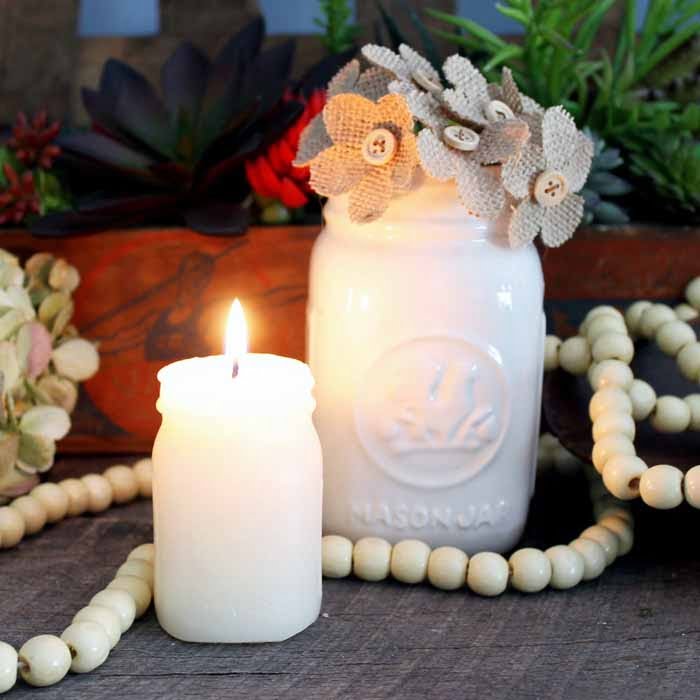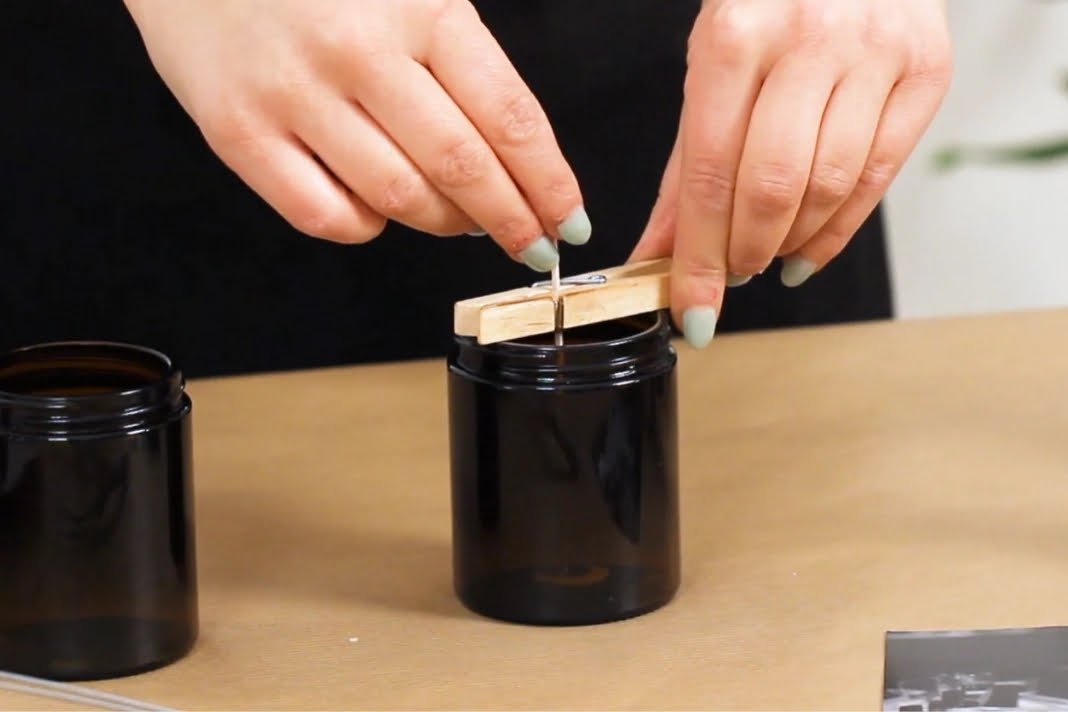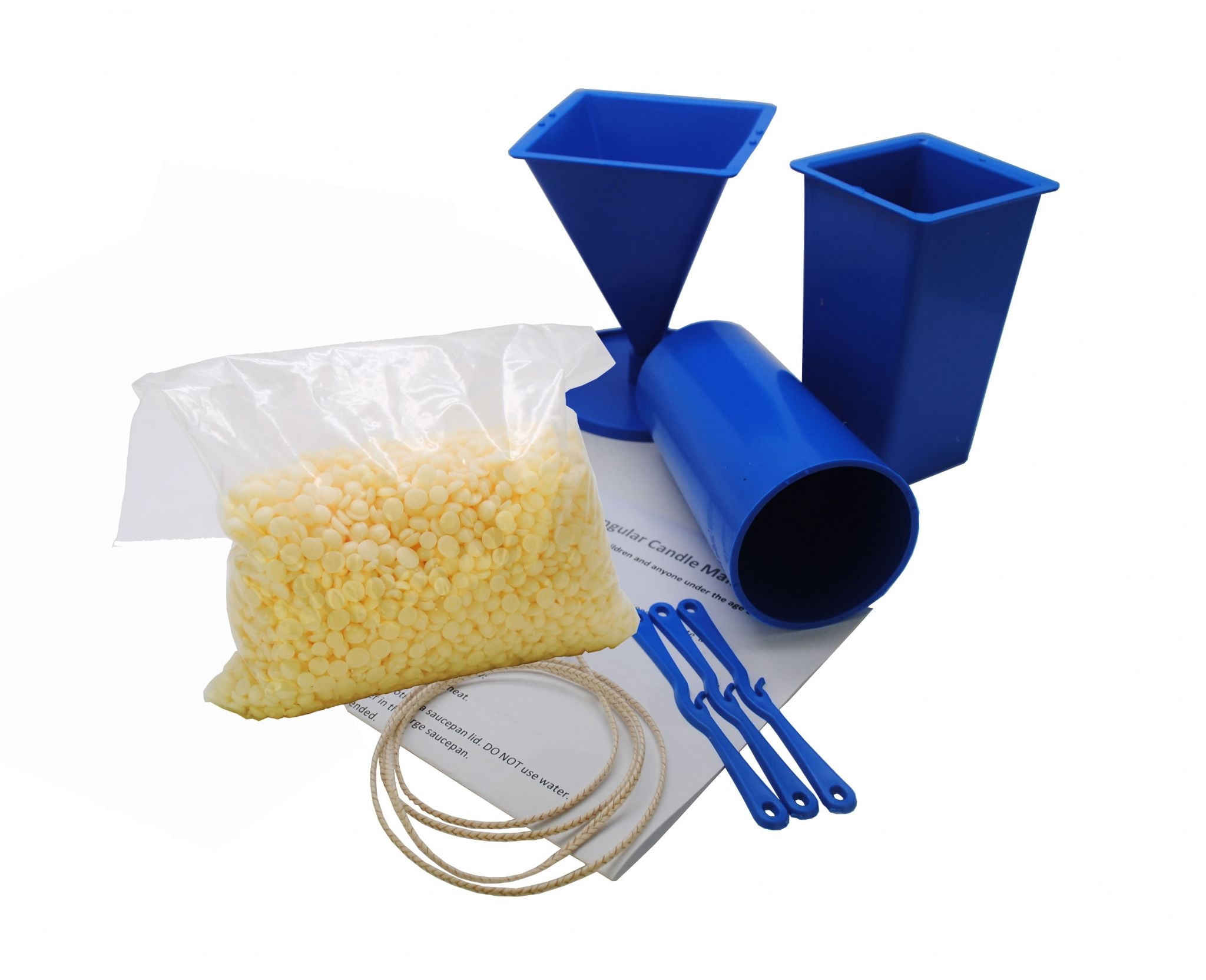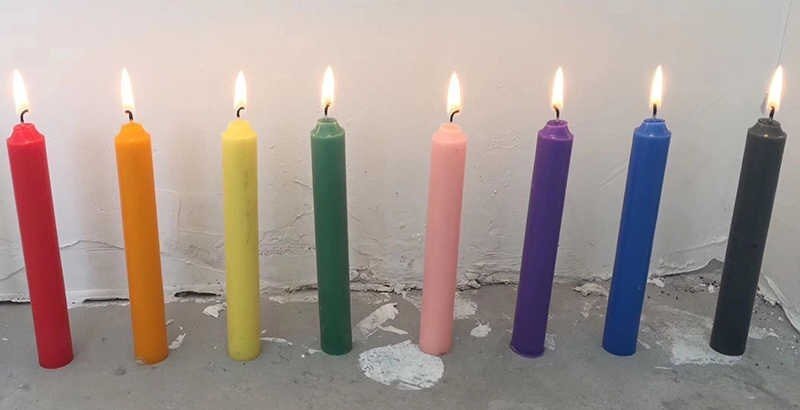Soy candle making has become increasingly popular in recent years as people are turning to natural alternatives for home fragrance. One crucial factor that can greatly affect the quality and outcome of soy candle making is temperature control. The temperature at which you melt the soy wax, add fragrance oils, and pour the mixture into molds plays a vital role in achieving a perfect soy candle.
In this article, we will delve into the importance of temperature in soy candle making and guide you on how to choose the right temperature for optimal results. We will also discuss the tools and equipment necessary for temperature control during the candle-making process.
When it comes to successful soy candle making, precision is key. Maintaining the correct temperature throughout each step is crucial for achieving candles with excellent burn time, scent throw, and overall performance. Understanding how to manage temperatures effectively will not only enhance your skills but also guarantee consistent results every time you make a soy candle.
In the next section, we will explain why temperature control is essential when making soy candles and explore how different ranges can influence their quality. So without further ado, let’s dig deeper into the fascinating world of soy candle making and discover why temperature plays such a significant role in creating beautiful and long-lasting candles.
The Importance of Temperature in Soy Candle Making
Temperature plays a crucial role in soy candle making, as it affects the overall quality and performance of the candles. The right temperature can ensure that your candles have a smooth and even burn, good scent throw, and proper adhesion to the container. On the other hand, incorrect temperatures can result in issues such as tunneling, frosting, poor scent throw, and even safety hazards like overheating and combustion.
One of the main reasons why temperature is important in soy candle making is its impact on the melting process. Soy wax has a lower melting point compared to other waxes, typically melting around 120-180 degrees Fahrenheit (49-82 degrees Celsius).
Heating the wax at too high a temperature can damage its chemical structure and lead to discoloration or loss of fragrance. On the other hand, heating it at too low a temperature may not fully melt all the soy flakes or cause poor adhesion to the container.
Another aspect that temperature affects is fragrance load. When adding fragrances to soy wax, it is important to do so at the right temperature range for optimal scent throw. Most fragrance oils should be added when the melted wax reaches around 170-185 degrees Fahrenheit (77-85 degrees Celsius), as this allows for better dispersion and absorption of the fragrance into the wax.
Maintaining consistent temperatures throughout different stages of soy candle making is also essential for achieving desired results. For example, pouring hot wax into containers that are significantly colder than it can lead to uneven cooling and potential cracking in your candles. Similarly, drastic changes in room temperature during cooling can cause surface imperfections such as cratering or sinkholes in your finished candles.
To track and control temperatures accurately during soy candle making, specific tools are available. A reliable thermometer with Celsius markings is an essential tool for monitoring both wax melting temperatures and cooling temperatures. It is recommended to use digital thermometers for greater accuracy.
| Temperature | Celsius |
|---|---|
| Melting Point of Soy Wax | 49-82 degrees Celsius |
| Ideal Temperature Range for Adding Fragrance | 77-85 degrees Celsius |
| Avoid pouring into containers below this temperature: | X degrees Celsius |
Choosing the Right Temperature for Soy Candle Making
Choosing the right temperature is crucial in soy candle making as it plays a significant role in achieving the desired results. The temperature affects various aspects of the candle-making process, including the fragrance throw, burn time, and appearance of the finished product. This section will discuss the importance of choosing the right temperature and provide guidelines for determining the ideal temperature for your soy candles.
When it comes to selecting the appropriate temperature for soy candle making, there are a few factors to consider. Firstly, you need to consider whether you want a strong or subtle fragrance throw in your candles. Generally, higher temperatures tend to result in a more robust scent throw, while lower temperatures produce a milder fragrance. So if you prefer stronger scented candles, using higher temperatures would be advisable.
Secondly, the melting point of soy wax should be taken into account when choosing the right temperature. Soy wax has a lower melting point compared to other waxes, typically between 110°F (43°C) and 140°F (60°C). It is important to heat soy wax within this range to ensure proper melting without causing any damage to its structure. If you exceed this range, it can lead to discoloration or even scorching of the wax.
Additionally, the pour temperature is another essential aspect when selecting the right temperature for soy candle making. The pour temperature refers to the temperature at which you pour melted wax into containers or molds. It is recommended to pour soy candles between 130°F (54°C) and 150°F (66°C), as pouring at higher or lower temperatures may result in poor adhesion between layers and uneven surfaces on your candles.
To summarize, choosing the right temperature is crucial for achieving optimal results in soy candle making. Consider factors such as fragrance throw preference and melting point of soy wax when determining the ideal temperature for your candles. Additionally, pay attention to pour temperatures for proper adhesion and an even surface finish. Taking these factors into account will help you create beautiful and fragrant soy candles.
Tools and Equipment for Temperature Control in Soy Candle Making
Temperature control is essential in the process of making soy candles. To achieve the perfect temperature, it is important to have the right tools and equipment. Here are some essential items you will need for temperature control in soy candle making:
Thermometer
A thermometer is a must-have tool for monitoring the temperature throughout the candle-making process. It allows you to measure the temperature accurately and make any necessary adjustments. There are various types of thermometers available, but a digital thermometer with a probe is recommended for its ease of use and accuracy.
Double Boiler
A double boiler is a set of two pots, one fitting inside the other. This equipment helps prevent direct exposure of the wax to high temperatures by creating indirect heat. The larger pot contains water, which acts as a buffer between the heat source and the wax-filled inner pot. This method ensures gentle heating and helps avoid overheating or scorching the wax.
Heat Source
To maintain a consistent temperature while melting soy wax, you will need a reliable heat source. Electric hot plates or induction cookers are commonly used as they provide an even distribution of heat and can be easily controlled.
Candle Melting Pot
A dedicated candle melting pot or pitcher is useful for melting your soy wax evenly without risking damage to your kitchenware. Look for a melting pot with a pouring spout for easy transfer of melted wax into containers.
Heat-resistant Containers
To pour your melted soy wax into containers, you will need heat-resistant containers that can withstand high temperatures without cracking or breaking. Glass jars or metal tins are popular choices as they are able to handle the heat generated during pouring and cooling.
By investing in these essential tools and equipment, you can ensure better control over the temperature during soy candle making. This will ultimately lead to higher-quality candles with consistent results.
Step-by-Step Guide to Achieving the Perfect Temperature for Soy Candle Making
Soy Candle Making is a delicate art that requires careful attention to detail, especially when it comes to temperature control. Achieving the perfect temperature is crucial for creating high-quality soy candles that burn evenly and have a smooth finish. In this step-by-step guide, we will walk you through the process of achieving the perfect temperature for soy candle making.
1. Gather all the necessary tools and materials:
Before you begin, make sure you have all the necessary tools and materials ready. This includes a double boiler or a heat-resistant container, a thermometer, a stirring utensil, soy wax flakes, fragrance oils or essential oils, dye (optional), wicks, and containers to hold the candles.
2. Melt the soy wax:
Start by melting the soy wax flakes in a double boiler or heat-resistant container over medium heat. It’s important to melt the wax slowly and at a consistent temperature to prevent scorching or overheating. Monitor the temperature using a thermometer until the wax reaches around 185°F (85°C).
3. Add fragrance oils or essential oils:
Once the wax has reached the desired temperature, remove it from heat and let it cool slightly before adding fragrance oils or essential oils. The ideal temperature range for adding oils is between 140-160°F (60-71°C). This ensures that the scent binds well with the wax without evaporating too quickly.
4. Pouring into containers:
Next, allow the melted wax to cool further until it reaches pouring temperature. For most soy candles, this is around 120-135°F (49-57°C). Make sure to check your specific recipe or instructions as some fragrances may require different pouring temperatures.
5. Inserting wicks:
While waiting for your wax to cool down to pouring temperature, prepare your containers by attaching pre-tabbed wicks securely at their center bottoms using glue dots or hot glue gun. Make sure they are straight and properly centered.
6. Pouring the wax:
Slowly pour the melted wax into the prepared containers. It’s important to pour slowly and steadily to prevent air bubbles from forming. Fill each container almost to the top, leaving a small gap for the wick.
By following these step-by-step instructions, you can achieve the perfect temperature for soy candle making and ensure that your candles turn out beautifully every time. Remember to monitor the temperature closely throughout the process and make adjustments as needed to maintain optimal results. With practice and attention to detail, you will master the art of soy candle making and create stunning candles with a luxurious burn.
Common Temperature Mistakes to Avoid in Soy Candle Making
When it comes to soy candle making, temperature plays a crucial role in achieving the desired results. Making mistakes with temperature can result in poor quality candles that don’t burn properly or have uneven texture. To help you avoid these common temperature mistakes, we’ve compiled a list of key points to keep in mind during the process.
One common mistake is heating the soy wax too quickly. It’s important to remember that patience is key when melting soy wax. Heating it too quickly can cause the wax to become overheated, resulting in a change in its chemical properties and potentially leading to issues like frosting or cracking. To avoid this, it’s recommended to melt the wax slowly and at a low temperature, using a double boiler or a dedicated candle wax melter.
Another common temperature mistake is not allowing enough time for the melted wax to cool before adding fragrance oils or other additives. Adding fragrance oils at high temperatures can cause them to evaporate quickly, resulting in weak scent throw in the finished candle. Allow your melted wax enough time to cool down below 80°C (176°F) before adding any fragrances or additives.
Additionally, not monitoring the pouring temperature can be a significant mistake. The pouring temperature refers to the temperature at which you pour your melted wax into containers. Pouring too hot or too cold can result in various problems such as sinkholes, rough surfaces, and poor adhesion between layers if you’re creating multi-layered candles. It’s crucial to monitor and maintain the pouring temperature within the recommended range mentioned by your specific soy wax manufacturer.
By avoiding these common temperature mistakes, you’ll significantly improve your chances of creating high-quality soy candles with excellent burning performance and aesthetic appeal. Remember that mastering the art of soy candle making requires careful attention to detail and adherence to proper temperature control techniques throughout the entire process. With practice and an understanding of how different temperatures impact your candles, you’ll be well on your way to becoming a skilled soy candle maker.
Troubleshooting Temperature Issues in Soy Candle Making
When it comes to soy candle making, maintaining the correct temperature is crucial for achieving the desired outcome. However, even with the best intentions and careful preparation, temperature issues can still arise. In this section, we will explore some common temperature problems that candle makers may encounter and provide troubleshooting tips to help resolve them.
One common issue that candle makers face is uneven cooling or setting. This occurs when the wax cools at different rates, resulting in a lumpy or uneven surface. This can be caused by various factors such as room temperature fluctuations or pouring the wax too quickly.
To troubleshoot this problem, it’s important to ensure that you are pouring the wax at the recommended temperature range and not rushing the process. Additionally, consider using a heat gun or hairdryer on low heat to gently warm any areas that have cooled too quickly.
Another temperature-related problem is excessive frosting on your soy candles. Frosting refers to the white crystalline appearance that can develop on the surface of soy candles during cooling. While many consider it a natural characteristic of soy wax, excessive frosting can be undesirable for some candle makers. To minimize frosting, try pouring your wax at a slightly higher temperature than usual and avoid exposing your candles to significant temperature changes during cooling.
Lastly, sinking of fragrance oils is another frequent concern when it comes to temperature control in soy candle making. If you notice that your fragrance oils are sinking to the bottom of your candle rather than being evenly distributed throughout, it may be due to pouring your wax at too high of a temperature. To troubleshoot this issue, try reducing your pouring temperature slightly and stirring your fragrance oils thoroughly before adding them to the melted wax.
Temperature Troubleshooting Tips
| Issue | Troubleshooting Tip |
|---|---|
| Uneven cooling or setting | Pour wax at recommended temperature range and use a heat gun or hairdryer on low heat for gentle warming. |
| Excessive frosting | Pour wax at a slightly higher temperature and avoid exposing candles to drastic temperature changes during cooling. |
| Sinking fragrance oils | Pour wax at a slightly lower temperature, thoroughly stir fragrance oils before adding them to melted wax. |
Best Practices for Maintaining an Optimal Temperature during Soy Candle Making
Use a Thermometer
One of the best practices for maintaining an optimal temperature during soy candle making is to use a thermometer. A thermometer will help you monitor the temperature of the melted soy wax, ensuring that it stays within the desired range. There are various types of thermometers available, such as candy or digital thermometers, that can be used for this purpose.
To use a thermometer, simply insert it into the melted soy wax and wait for it to give an accurate reading. Keep in mind that different stages of candle making require different temperatures, so it’s important to have a thermometer that can measure both high and low temperatures. By regularly checking the temperature throughout the process, you can make adjustments as needed to maintain an optimal temperature.
Use a Double Boiler Setup
Another best practice for maintaining an optimal temperature during soy candle making is to utilize a double boiler setup. This involves using two pots – one larger pot filled with water and one smaller pot placed inside it containing the soy wax. The water acts as a buffer between the heat source and the soy wax, preventing direct heating and ensuring more even distribution of heat.
The double boiler setup helps maintain a constant and consistent temperature throughout the melting process. It also reduces the risk of overheating or burning the soy wax, which can result in poor-quality candles with uneven texture or fragrance loss.
Monitor Heat Sources Carefully
It’s crucial to monitor heat sources carefully when maintaining an optimal temperature during soy candle making. Different heat sources, such as stove burners or electric heaters, may have varying temperatures or provide inconsistent heat distribution.
If using a stove burner, adjust it to medium-low heat to prevent rapid heating that could scorch or burn the soy wax. Consider using a hot plate or induction cooktop with precise temperature controls if you want more control over the heat source.
Additionally, avoid placing the soy wax directly on a heat source without any protection or insulation to prevent localized hot spots that could overheat the wax. Always use a double boiler setup or another method to provide indirect heat for better temperature control.
By following these best practices, you can maintain an optimal temperature during soy candle making, resulting in high-quality, well-formed candles with excellent scent throw and burn characteristics.
Conclusion
In conclusion, mastering the art of soy candle making requires proper temperature control. Temperature plays a crucial role in every step of the process, from melting the wax to pouring and cooling the candles. By understanding the importance of temperature and following best practices, you can create beautiful and high-quality soy candles.
Choosing the right temperature for soy candle making is essential for achieving optimal results. Too high of a temperature can cause the wax to overheat and lead to cracking or uneven burning. On the other hand, if the temperature is too low, the wax may not fully melt or adhere properly to the container. It is recommended to follow specific temperature guidelines provided by reputable sources or manufacturers to ensure successful outcomes.
Having the right tools and equipment for temperature control is also crucial in soy candle making. Thermometers, double boilers, and heat sources like stovetops or electric hot plates are commonly used to monitor and adjust temperatures during different stages of the process. Investing in reliable equipment will help you maintain consistency and precision in your candle-making endeavors.
By following a step-by-step guide and avoiding common temperature mistakes, you can produce high-quality soy candles with ease. Remember to troubleshoot any temperature issues that may arise during the process. Whether it’s adjusting heating sources or tweaking your technique, addressing these problems promptly will ultimately contribute to your success as a soy candle maker.
In conclusion, mastering soy candle making involves understanding and controlling temperature throughout each stage of production. With proper temperature control techniques and adherence to best practices, you can create beautiful candles with consistent quality. So go ahead and embrace this art form while harnessing the power of temperature control in your soy candle making journey.

Welcome to my candle making blog! In this blog, I will be sharing my tips and tricks for making candles. I will also be sharing some of my favorite recipes.





